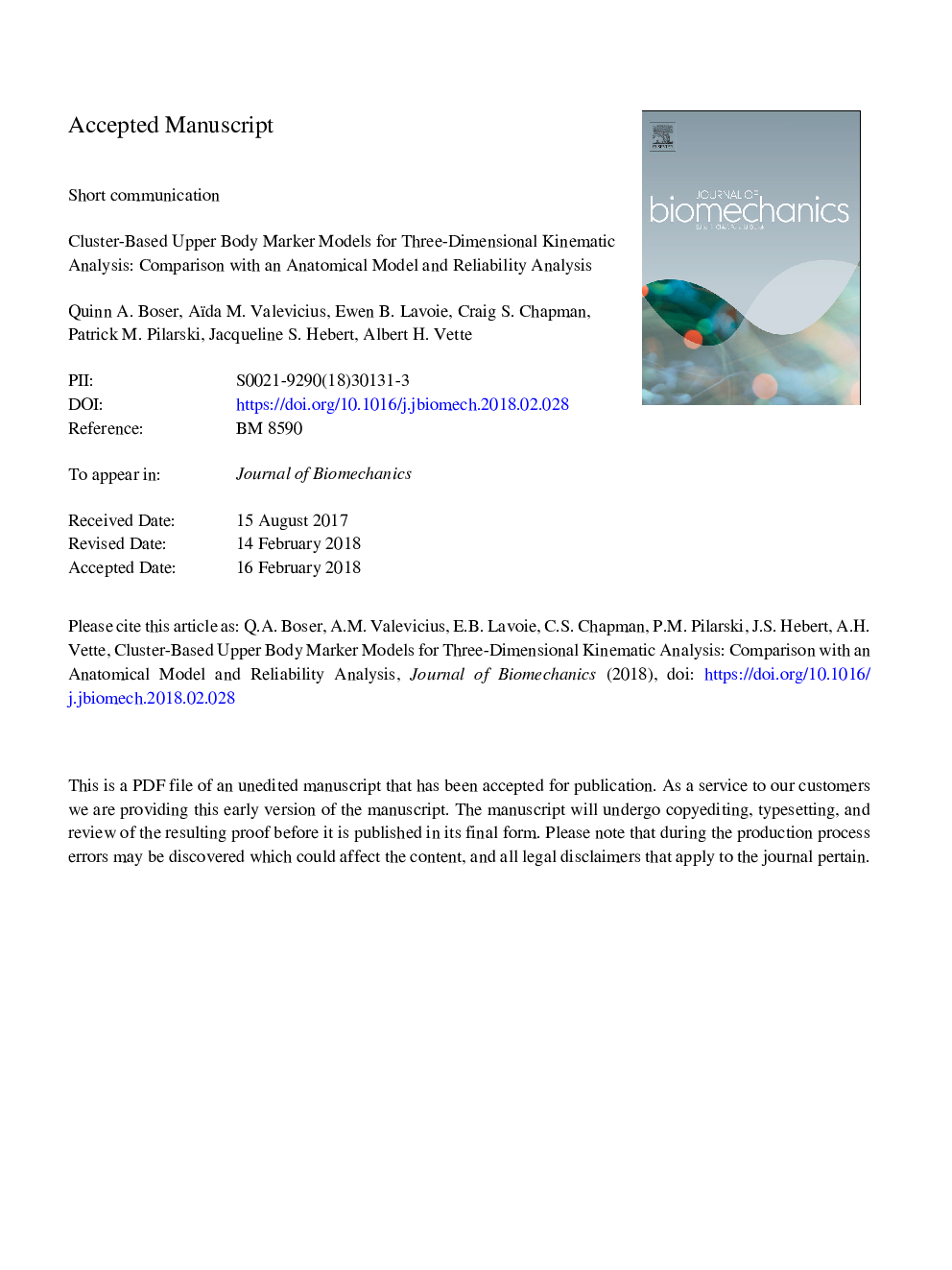| Article ID | Journal | Published Year | Pages | File Type |
|---|---|---|---|---|
| 7236359 | Journal of Biomechanics | 2018 | 22 Pages |
Abstract
Quantifying angular joint kinematics of the upper body is a useful method for assessing upper limb function. Joint angles are commonly obtained via motion capture, tracking markers placed on anatomical landmarks. This method is associated with limitations including administrative burden, soft tissue artifacts, and intra- and inter-tester variability. An alternative method involves the tracking of rigid marker clusters affixed to body segments, calibrated relative to anatomical landmarks or known joint angles. The accuracy and reliability of applying this cluster method to the upper body has, however, not been comprehensively explored. Our objective was to compare three different upper body cluster models with an anatomical model, with respect to joint angles and reliability. Non-disabled participants performed two standardized functional upper limb tasks with anatomical and cluster markers applied concurrently. Joint angle curves obtained via the marker clusters with three different calibration methods were compared to those from an anatomical model, and between-session reliability was assessed for all models. The cluster models produced joint angle curves which were comparable to and highly correlated with those from the anatomical model, but exhibited notable offsets and differences in sensitivity for some degrees of freedom. Between-session reliability was comparable between all models, and good for most degrees of freedom. Overall, the cluster models produced reliable joint angles that, however, cannot be used interchangeably with anatomical model outputs to calculate kinematic metrics. Cluster models appear to be an adequate, and possibly advantageous alternative to anatomical models when the objective is to assess trends in movement behavior.
Related Topics
Physical Sciences and Engineering
Engineering
Biomedical Engineering
Authors
Quinn A. Boser, Aïda M. Valevicius, Ewen B. Lavoie, Craig S. Chapman, Patrick M. Pilarski, Jacqueline S. Hebert, Albert H. Vette,
